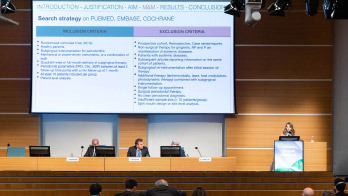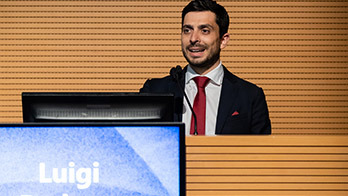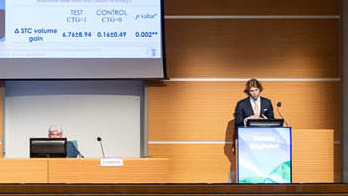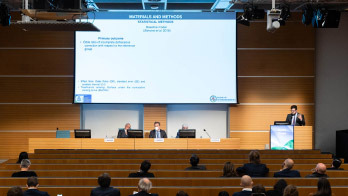Risposta di fase acuta dopo trattamento parodontale non chirurgico a bocca completa rispetto al trattamento a quadranti in soggetti con diabete di tipo 2: studio clinico randomizzato
PREMIO H.M. GOLDMAN 2022
Stefano Gennai
Abstract
Aim: To compare the level of inflammatory markers and endothelial function 24 hours (Day1) and 90 days (Day90) after conventional quadrant-wise (Q-SRP) versus full-mouth scaling (FMSRP) in patients affected by type 2 diabetes mellitus (T2DM).
Methods: 40 patients affected by periodontitis and T2DM were randomly allocated to receive FM-SRP or Q-SRP and followed up at Day1 and Day90. Serum samples, vital signs and flowmediated dilation (FMD) parameters were collected at baseline, Day1 and Day90. Periodontal variables were collected at baseline and Day90.
Results: FM-SRP produced a significant increase in C-reactive Protein (CRP) and a significant reduction in FMD at Day1 compared to Q-SRP (p<0.05). The absolute change in HbA1c from baseline to Day90 was significantly improved in the Q-SRP (ΔHbA1c=-1.59±1.20) compared to the FM-SRP group (ΔHbA1c=-0.8±0.95) (p=0.04). The linear multivariate regression model showed that the higher the relative C-reactive Protein (CRP) increase at Day1, the lower the reduction in HbA1c levels (ΔHbA1c) at Day90 (F=2.12; p=0.04; adjusted R2=41.04%).
Conclusions: FM-SRP triggers a moderate acute-phase response at 24 hours after treatment compared to Q-SRP. Such systemic acute perturbations seem to offset the benefic systemic effects of periodontal treatment in terms of HbA1c reduction and improvement in endothelial function in T2DM subjects.






